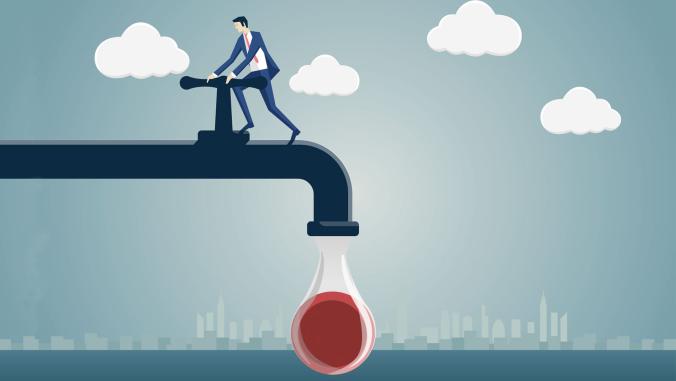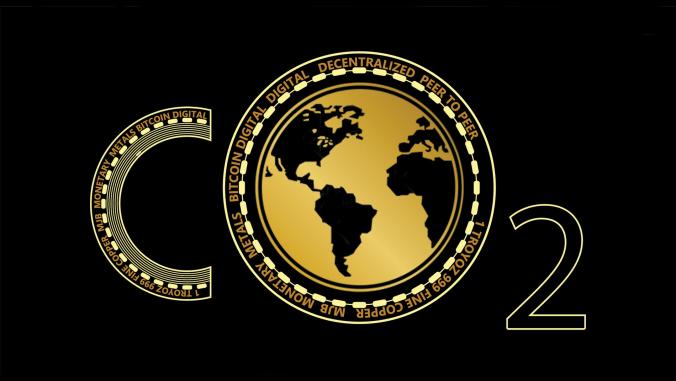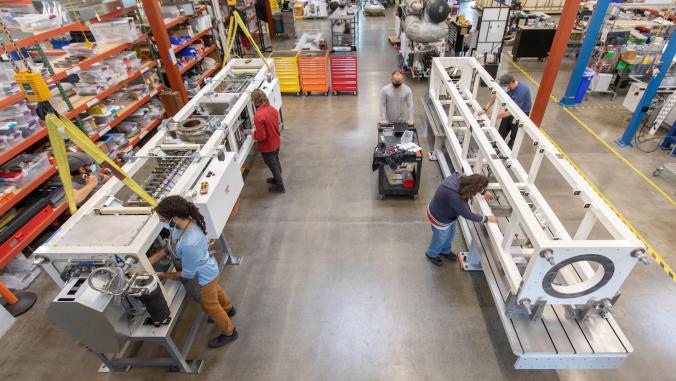Are We Entering Cleantech's Dark Ages?
<p>From political wrangling to economic downturns, there is no shortage of signs that cleantech companies are about to go down a bumpy road. Here's how we went from boom times to dark days ahead.</p>

The budget brinksmanship that, amazingly, lasted all the way into the first days of August pushed me over the edge. Whether a willful choice, or some kind of subliminal denial, I opted for a partial mental vacation in recent weeks, trying to tune out from the mostly dismal news about elections, energy and environment.
But all vacations must end, and as distasteful as the political process has been for the last few weeks, the late-summer news cycle holds potentially big impacts for the world of cleantech.
From policies enacted and planned to electoral and financial developments, all signs suggest we're moving from relative boom times for cleantech into what will almost certainly be dark days.
Cleantech's "Age of Austerity"
Let's start with the fallout from budget deal, known officially as the Budget Control Act (BCA) of 2011. Scanning a few weeks' worth of news releases from Bloomberg New Energy Finance (BNEF), the prospects for cleantech finance are nothing short of grim.
"For the clean energy sector, the Act heralds an era of austerity in which current subsidy programmes may not be extended beyond their current funding," wrote Stephen Munro, a policy analyst at BNEF, in a research note on Aug 5 titled "An age of austerity for clean energy?"
The BCA agreement requires cuts of $917 billion in discretionary spending. Clean energy programs aren't named specifically, but they fall under the discretionary spending portion of the budget, Munro points out.
Programs are likely to become vulnerable as they come up for renewal. First up is the Treasury Department's "1603" cash grant program for early-stage project investment, which expires at the end of this year.
For solar and wind developers formerly dependent on tax equity finance -- which evaporated as a result of the mortgage-backed security crisis -- these 1063 grants, which can cover 30 percent of a project's upfront costs, have been a lifesaver. Last December, the Solar Energy Industry Association estimated that the grant program had made possible more than 1,100 solar projects in 42 states, with a total investment value $18 billion.
Similarly, the 100 percent bonus depreciation incentive for new equipment and property purchased for renewable energy projects sunsets soon. Known by the unwieldy acronym MACRS (short for Modified Accelerated Cost-Recovery System), the federal program allows businesses to accelerate deductions for the capital investments to five years, or just one, for certain bonus projects.
Renewal looks "unlikely" for either of these programs.
There's some stirring that the tax-equity market -- which the 1603 cash grants were established to replace -- will rise again. ClimateWire's Joel Kirkland recently wrote that a return to tax equity financing may be nigh (via the NYT). Given that corporate America is sitting on mountains of cash, it follows that they'll seek higher returns than are available through Treasury bills.
Kirkland's central example is Google, which has made seven green energy investments totaling $700 million over the past few years. Although it would be encouraging if those investments marked the start of a rush to market, that's not the sense I'm getting from my review.
Further out, the bipartisan committee of 12 created as part of the BCA boondoggle is required to come up with another $1.5 trillion in cuts over the next decade. For wind, solar and geothermal projects, tax credits end as early next year, and deadlines continue through 2016.
What's more, the fisticuffs aren't over. The Act doesn't make adjustments to the overall budgets for the Energy Dept. or Environmental Protection Agency or any of their sub-programs, such as ARPA-E. Yet these budgets, Munro points out, will be among the first to be addressed when lawmakers return from their summer recess on Sept. 5. Given the bludgeoning GOP presidential aspirants have lately been administering to the EPA, it's likely the EPA and DOE budgets could be especially tortured in the next couple of weeks.
"The debt agreement, which is focused on cuts only and not revenue increases, makes it more likely that this infant sector gets strangled before it matures," said Daniel Weiss, a senior fellow at the Center for American Progress, a Washington policy group that advises Democrats, in an interview with Bloomberg Government.
Subsidies for renewable energy are expected to decline beginning this year, and will fall 77 percent by 2016 from their peak in 2010, according to Bloomberg News, citing data from the White House Office of Management and Budget.
Cleantech VC Investment Ebbs
Well maybe the private sector will step up and fill the gap -- maybe Google's investments are a sign of things to come, right? Probably not.
Second-quarter venture investment in early-stage cleantech startups decelerated, according to the Cleantech Group's preliminary data for the quarter, released in early June.
Global funding hit $1.83 billion, a 33 percent retreat from the prior quarter ($2.75 billion) and 10 percent down on 2010 ($2.03 billion). Quarter to quarter VC numbers are notoriously volatile, but behind these numbers are other signals that the U.S. cleantech ecosystem is not generating a lot of new companies: Most of the deals -- 66 percent by deal number, and 87 percent by value -- were B-series or later stages. Funding retreated more sharply in the U.S. than Europe or Asia-Pacific.
A Dearth of IPOs
A close cousin of cleantech venture capital funding is the rate of initial public offerings of shares by young, fast growing companies. By this measure too, the climate in the U.S. is growing more anemic by the week, just when it should be offering a vigorous exit path for smart, small companies.
While the Cleantech Group data reflected a "robust" global IPO market through June, the bulk of the listings have come in China. Here in the U.S., the swooning stock market is reinforcing a sense that much-anticipated listings are likely to hold back. At GigaOm.com, Ucilia Wang captured this snapshot:
"…companies that have filed papers for IPOs (but not yet traded) include solar equipment developer Enphase Energy, smart grid tech company Silver Spring Networks, biodiesel producer Renewable Energy Group, and solar power plant developer BrightSource Energy. VentureWire reported that electric car company Fisker Automotive, and biofuel company Genomatica had also hired bankers to investigate the IPO process. But it's seemed apparent to some of these companies that the IPO window has been slowly closing."
Oil Prices Falling
With the economy teetering between neutral and reverse, oil prices are falling. West Texas Intermediate (WTI, the U.S. benchmark) fell to around $80 per barrel early in the month, presaging a fall of 40 cents per gallon at the pumps, if the price signal follows through.
Lower fuel prices are salve to an ailing economy, of course. But they're trouble for companies looking to sell innovative transportation technologies, whether they're century old automakers pushing advanced EVs or algal biofuel startups targeting their production price for $100 oil. More broadly, low energy prices dilute public urgency on energy efficiency and alternative energy.
In its Aug. 8 research note, Bank of America's Global Energy Weekly pointed to threat of a double dip recession. By its models, a mild recession would draw Brent Crude (Europe's North Sea reference blend) to $80 per barrel, and (more importantly to U.S. buyers), WTI to $50-60 per barrel.
While these two blends typically trade within a dollar of one another, in recent weeks their prices have diverged to record levels, with Brent trading at over $25 per barrel more than WTI. The gap reflects unprecedented levels of uncertainty with Europe's fiscal outlook and worries the U.S. is about to tip back into recession.
Is It Darkest Before the Dawn?
If all these harbingers from the political and economic arenas weren't enough, we've also had one of the most extreme and disaster-filled weather years ever -- with 2011 already bringing more billion-dollar catastrophes than in any other year, according to NOAA.
And to top it all off comes news from the Energy Information Administration that U.S. carbon emissions rebounded by more than 3.9 percent last year, the sharpest uptick in more than 20 years, as industrial activity, power generation and travel volumes returned to norms depressed by the Great Recession.
It's enough to make anyone want to go back on vacation, at least until Labor Day, or maybe Groundhog Day, or … anytime after November 6, 2012.
But perhaps I'm overly pessimistic -- I'd love to know if you're seeing anything out there in the world that offers some hope for a resurgence of cleantech's potential?
Photo CC-licensed by Samuel Stocker.





